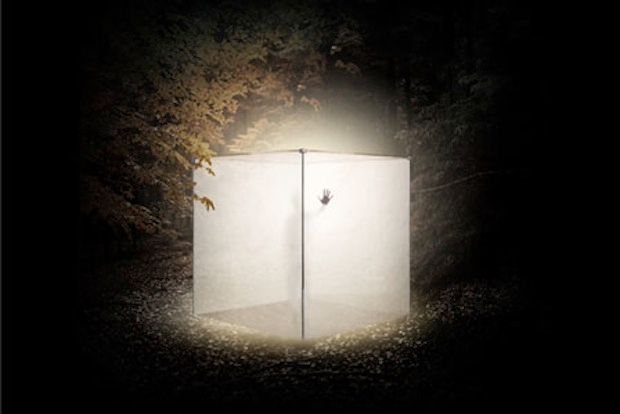Debussy’s description of the music of Parsifal as being ‘lit up from behind’ is famous; less so is Wagner’s own remark to Cosima that in his last music drama he was trying to get ‘the effect of clouds merging and separating’. The scoring of the music, especially in the outer acts, is so extraordinary that even people who are repelled by the subject matter of Parsifal, such as Nietzsche, are still overwhelmed by its beauty, which uniquely combines sensuousness and spirituality. It’s a beauty that has to cope with and contain a very great deal of pain, more even than Act III of Tristan.
Even the quasi-liturgical unison opening bars of the Prelude soon become, when harmonised, a warning of the suffering to come; while the closing section of the Prelude led Nietzsche to write to a friend that it had ‘a penetration of vision that cuts through the soul as if with a knife’, and even in the most serene passages of the score there are unexpected jagged edges, sudden sforzati, harmonic lurches that remind us that peacefulness and repose are never states we can be confident of resting in; while the two stretches of Transformation Music, the first in particular, take the expression of pain to its absolute limits, a final place which has no rival in any art.
None of this existed in the first night of the new production of Parsifal at the Royal Opera. The orchestra played magnificently, and it was evident that Antonio Pappano had rehearsed the work with enormous care. What was equally evident was that it found him quite out of his depth. The music proceeded on its nervelessly lovely way without a hint of anxiety or disquiet, let alone rage and near-madness. Blending and precision seemed to be its sole aims, often too insistent a precision, like a pianist with a staggering technique playing a late Beethoven sonata note-perfectly and with no awareness of its content. To achieve such clarity and poise Pappano needed tempi that were slow, which in this case meant without momentum. The tempi that Mark Elder achieved in his Prom performance of Parsifal were similar, but there hardly one of Wagner’s points was missed, and, despite the partly inadequate cast, that performance will remain in the memory as one by which all others are measured.
I write about the musical side at such length because I have found that I can bear almost any production of Parsifal if it is well conducted and tolerably sung, but if the musical account is as inadequate as it was at the Royal Opera nothing can redeem the work from seeming pretentious and largely unintelligible posturing. Unfortunately, this production, like the last three of the work at the Royal Opera, was wanting in most respects.
There is a permanent set, a hospital room with a bed, glass walls and steel frame, positioned in the centre of tall columns that pass as trees or the structure of a temple. White and black are the only colours of anything, except for the occasional slight reddening of the backcloth. Light-grey suits are the order of dress, as they are the fashion for operatic presentations of religious orders this season.
The cast looks distinguished, but in the event only one performer makes a truly deep impression: Gerald Finley in his second Wagner role, as Amfortas. Never abandoning his beautiful tone, he presents as vivid a portrayal of this figure as any I have seen, though it is largely wasted in the context. He lies in the bed writhing during the Prelude, ministered to by masked, gloved, syringe-wielding male nurses. René Pape is Gurnemanz, pouring out a stream of luscious though surprisingly quiet tone, which perfectly matches the event-free accompaniment. In Act III he tries to enact elderliness by walking stiffly, but it doesn’t work, and otherwise acting seems none of his business.
The Kundry of Angela Denoke, like Finley’s Amfortas, would in the right setting be a fine portrayal, but goes for little in Act II, because though she is striking in the hideous scene with Klingsor, brilliantly eerie Willard White, she otherwise has to contend with Simon O’Neill’s Parsifal. He is an undependable artist, and for most of the time his voice was at its tightest, and seemingly indifferent to the text, while mainly he, like his mentor Gurnemanz, abstains from any attempt at acting. Only for his last solo, ‘Nur eine Waffe taugt’, did he remind us of what he can do on a good evening, and if he is involved. Surely Stephen Langridge, who is the director, could have expended some energy in getting this set of artists, and the rest of the cast, to look as if they cared about one another. The most vibrant figure, paradoxically, was the Titurel of Robert Lloyd, providing the evening’s only frisson.
Langridge, as we know from other productions, especially The Minotaur, can bring seemingly remote figures to vivid life. Here he was more concerned to have a swan, which twitched for a long time after flopping to the ground, and to have the Grail as a loincloth-wearing boy, from whose side Amfortas drew blood in Act I, and who made a more mature brief appearance near the end of Act III, before Amfortas and Kundry wandered off slowly into the wings, hand in hand, to an unclear destination.






Comments